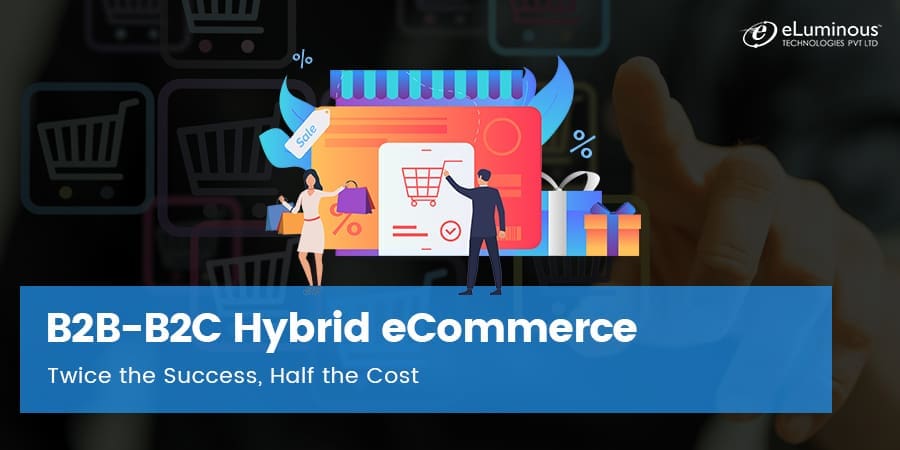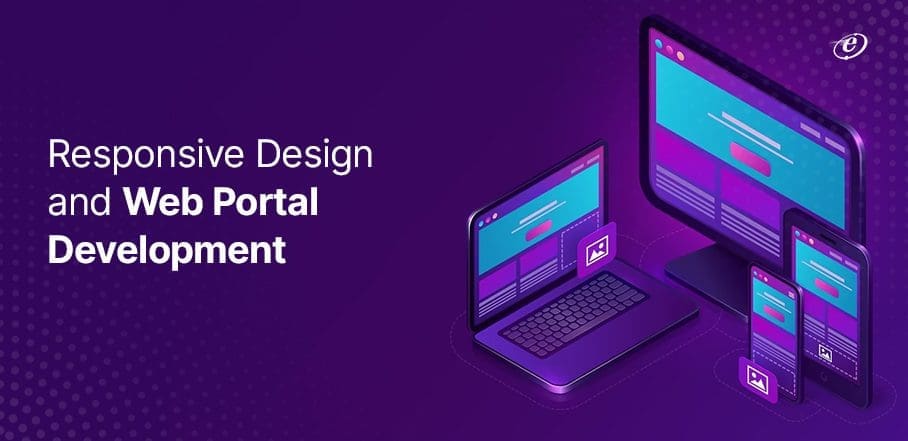
B2B-B2C Hybrid eCommerce: Twice the Success, Half the Cost
Did you know what is common between businesses as diverse as Burrow (DIY furniture), Tesla (premium electric cars), HP (PC and peripherals), and even Zoom (virtual communication)? They each belong to sectors that traditionally operate in the B2B space but have successfully adopted a DTC (Direct to Consumer) model.
There are loads of other B2B businesses exploring the B2C model as well. Not only does this give such brands an additional stream of revenue but also helps them gain a better understanding of how consumers use their products and how can they be improved.
Similarly, B2C businesses too are stepping into B2B territory. But their reason for doing so is the B2B vs B2C ecommerce market size. You see, B2B online sales are likely to top $1 trillion by end of 2020, which is twice of B2C online sales as per Forrester Rese arch. Naturally, B2C companies want a slice of this growing, higher-margin pie.
But how can B2B and B2C companies serve a diametrically opposite market without affecting their existing operations? The answer lies in hybrid ecommerce. In this post, we explore the difference between B2B and B2C ecommerce and how that gap is bridged by hybrid ecommerce.
That said, before we look at the ‘how’, let’s answer the ‘why’.
Why B2C and B2B eCommerce Cannot Be Mutually Exclusive?
As an ecommerce web application development company for over a decade, we recall a time when B2C and B2B companies did not tread into each other’s playing area. But as ecommerce grew, that line blurred as the newly empowered consumer did not need a middleman to communicate and transact with their favourite brands.
Similarly, B2B companies took to virtual storefronts such as Shopify and Magento to quickly set up their online DTC operations. With B2B eating into its share and the competition in the B2C segment dragging margins down, it was only a matter of time before B2C companies set their sights on the B2B market.
However, both B2B and B2C businesses faced a major challenge then as they do now – how to bring chalk and cheese together.
What is the Difference Between B2B and B2C eCommerce?
Five main areas define the B2B vs B2C ecommerce difference. These include:
- Target Audience/Market
A B2C brand’s target audience/market is the individual while for a B2B brand, it’s a group of individuals or organisation. For instance, Facebook is a B2C company that earns its revenue primarily through advertising to individual users. On the other hand, Salesforce is a B2B firm that builds software products to sell to other businesses.
- Number of Decision-makers
Since B2C companies cater to the individual, that individual is the only decision-maker such companies have to influence. As a result, B2C sales cycles are shorter and are often driven by the individual’s emotions. But in B2B, the decision-making process includes several stakeholders. This is why B2B sales cycles are longer as decisions are driven by numbers and consensus instead of emotions.
- Order Value and Order Volume
The purchasing power of an individual is significantly lower than that of an organisation. This forces B2C ecommerce brands to operate at the lower end of the order value spectrum. But since individuals outnumber organisations, B2C brands deal with considerably larger order volumes than B2B businesses.
The inverse is true when it comes to B2B brands. Their offerings are premium and niche which pushes up their order value significantly. But since the pool of organisational buyers is smaller than that of individual buyers, their order volumes are a fraction of those of B2C brands.
- Customer LTV (Lifetime Value)
LTV refers to the amount of revenue a business earns from a single customer throughout their lifetime. It’s considered one of the better metrics to calculate the profitability and feasibility of any business in today’s age of rapid private VC-fuelled growth.
Since B2C businesses have a large order volume (broad customer base) but lower order value, they report a lower LTV. Conversely, as B2B businesses enjoy higher order value on smaller order volumes (narrower customer base), they typically report higher LTV numbers.
- Customer Acquisition vs. Customer Retention
Because of their lower customer LTV, B2C companies focus more on constantly acquiring newer customers. But such a strategy can be prohibitively expensive for B2B brands, which is why they concentrate more on existing customer retention rather than new customer acquisition.
How Hybrid eCommerce Helps Tide Over these Differences?
Given these differences, a common platform to help a business participate in both B2B and B2C markets seems like a far-fetched idea. But that’s exactly what hybrid ecommerce offers. It saves you from building and maintaining two separate platforms by bringing together the best of B2B and B2C.
Here are four ways in which hybrid ecommerce can unlock the next level of growth for your ecommerce venture.
- Separate Customer Portals
Personalisation is the key to improving ecommerce sales, whether it’s B2B or B2C. To this end, the separate portal creation capability of hybrid ecommerce can help businesses cater to two diverse segments without spending a fortune on creating and personalising two distinct portals.
For instance, DTC pricing varies considerably more than B2B pricing. The factors that influence this variation include order size, order volume, and length and strength of the association between the two parties etc. A hybrid platform lets you adjust for all these factors and deliver a personalised experience to both your individual and organisational buyers.
- One Common Datastore
Since you’re targeting both B2C and B2B buyers, separate portals make sense. But reproducing the same product information across these portals is inefficient, hampers scalability, and causes duplication issues. This problem only gets worse if you have a large and diverse product catalogue with rich content.
A hybrid ecommerce platform helps you avoid this problem by drawing product-related information from a common data store. Using credential-based access, you can deliver information about your products from this datastore to different teams and buyers without worrying about duplication.
- Omnichannel Customer Journey Mapping
Charting your customer’s journey is one of the most effective ways to boost LTV by creating more upselling and repeat selling opportunities. A hybrid platform lets you do this by offering a common dashboard to view B2C as well as B2B customer data.
It also helps you to break down traditional data silos that exist between the two segments. As a result, it helps your marketing and product teams get a bird’s eye view of both customer segments. This can ultimately lead to more selling opportunities and newer product development opportunities, respectively.
- First- and Fast-mover Advantage
Today, the consumer is spoilt for choice as there is fierce competition among businesses. And with traditional B2B and B2C brands eyeing each other’s markets, this competition is only going to get fiercer. In this scenario, where time is of the essence, brands need a platform that can help them explore both markets without tinkering with too many things.
This platform should also allow easy configuration, customization, and personalisation out of the box. A hybrid ecommerce platform fulfills all those requirements. It helps businesses such as yours pivot to a new market with minimal changes and significantly reduces the time required to start selling in this new market.
Over to You
Do you want to join the ranks of HP, which recently switched to a hybrid ecommerce strategy with Magento with great success, or remain a business that leaves a potentially lucrative segment of the market untouched? Your answer might just be the difference between your business merely existing and growing by leaps and bounds.
Consign that ‘What if’ question to the dustbin and get in touch with us now to know what a hybrid ecommerce platform for your business might look, feel, and cost like. As an ecommerce web development company, we’ve helped B2C and B2B companies across North America, Europe, Africa, and Asia with their ecommerce infrastructure requirements.
And if you liked this post, do subscribe to get informative posts about web and mobile development, data analytics, and ecommerce delivered to your inbox. Thank you for reading!



